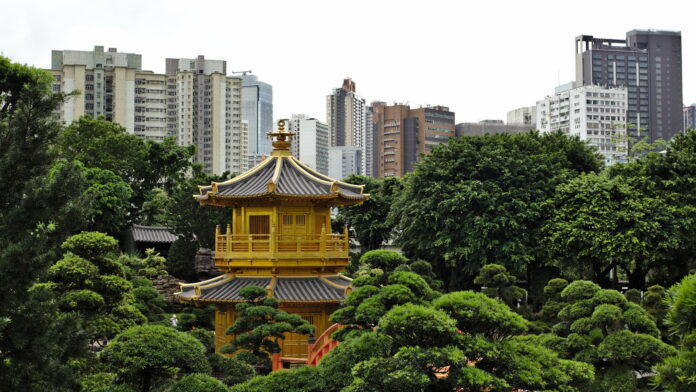Urban gardens are increasingly being recognized as crucial elements in the urban ecosystem, offering a multitude of benefits that extend far beyond the mere production of food. As cities continue to grow and natural habitats are replaced with concrete structures, urban gardens emerge as green havens, providing a respite for both humans and wildlife. The intersection of urban gardening and biodiversity conservation is an area of growing interest, as these small-scale agricultural practices have the potential to support urban wildlife in significant ways.
Urban Gardens: Green Havens
Urban gardens are often seen as small patches of green amid a sea of concrete, offering aesthetic pleasure and local produce to city dwellers. However, their role is far more profound; they serve as critical sanctuaries for various species that struggle to survive in urban environments. These gardens provide a network of mini-ecosystems that can support a surprising diversity of plants, insects, birds, and small mammals. By mimicking natural habitats, urban gardens create conditions that encourage the presence of wildlife, offering shelter, nesting sites, and food sources. Additionally, the strategic placement of urban gardens can create green corridors that facilitate movement and genetic exchange between otherwise isolated populations of urban wildlife.
The environmental benefits of these gardens are manifold. They help in mitigating the urban heat island effect, reducing runoff from heavy rains, and improving air quality. The presence of plants and soil in urban gardens can aid in carbon sequestration, contributing to climate change mitigation efforts. These green havens also serve as outdoor classrooms and laboratories, where people of all ages can engage with nature and learn about ecology, conservation, and sustainability – crucial knowledge in an increasingly urbanized world.
The Biodiversity Boost
The introduction of urban gardens has the potential to significantly bolster local biodiversity. As they are often more diverse in plant species than surrounding landscapes, gardens provide a variety of habitats and resources for a range of organisms. Pollinators such as bees, butterflies, and birds, in particular, benefit from the availability of flowering plants throughout the year. This continuous provision of food is vital for the survival of many pollinator species whose populations are in decline.
Urban gardens can act as stepping stones or refuges for species that are displaced by urban development. By preserving and even enhancing local biodiversity, urban gardens contribute to the resilience of ecosystems against environmental changes and disturbances. Gardeners can further boost biodiversity by selecting native plant species and avoiding the use of harmful pesticides and herbicides that can damage the surrounding flora and fauna.
The biodiversity present within urban gardens goes beyond what is immediately visible. Soil in these gardens is often teeming with life, hosting a variety of organisms such as earthworms, fungi, and microorganisms. These creatures play a crucial role in nutrient cycling and soil health, which in turn supports plant growth and contributes to a more balanced urban ecosystem overall.
Urban Farming & Wildlife
Urban farming practices can have a profound impact on local wildlife populations. By incorporating features such as birdhouses, insect hotels, and water features, urban farmers can create habitats that encourage wildlife to visit and take up residence. The practice of companion planting, or growing different plants together for mutual benefit, can also enhance habitat complexity and provide additional resources for wildlife.
However, the relationship between urban farming and wildlife is a delicate balance. While some species, such as pest controllers like ladybugs and birds, are welcomed, others can be problematic. Urban farmers must find ways to coexist with wildlife, such as rodents and some insects, that may pose challenges to crop production. This can be achieved through non-lethal methods of control, such as fencing, netting, and the promotion of natural predators.
Urban farming not only supports aboveground wildlife but also affects belowground biodiversity. Soil management practices typical of urban agriculture, such as composting and the avoidance of synthetic fertilizers, can enhance soil biodiversity and health. This, in turn, builds a more robust ecosystem capable of supporting a wider array of species and improves the productivity and sustainability of the urban garden itself.
Gardening for Ecosystems
Gardening with ecosystems in mind requires an understanding of the local environmental context and the specific needs of native species. Gardeners can contribute to conservation efforts by choosing native plants that support local insect and bird populations. Additionally, providing a mosaic of habitats, such as ponds for amphibians, woodpiles for small mammals, and varied plant heights and structures, can cater to a wide range of species.
The practice of natural gardening, which minimizes human intervention, allows for the development of a more self-sustaining ecosystem. This approach includes limiting the use of chemicals, allowing some areas to grow wild, and letting natural processes such as decomposition occur undisturbed. Such practices not only support a greater diversity of species but also enable gardeners to observe the natural interactions and cycles of their local ecosystem.
Finally, urban gardeners can play a key role in conservation education and advocacy. By engaging with the community, sharing knowledge, and encouraging sustainable practices, gardeners can raise awareness about the importance of biodiversity and the need for conservation efforts within urban areas. Collectively, these efforts can transform urban landscapes into thriving ecosystems that support biodiversity and offer a blueprint for the sustainable integration of nature and city living.
Urban gardens present a unique and valuable opportunity for biodiversity conservation within the urban landscape. They serve as green havens for wildlife, boost local biodiversity, support complex ecosystems, and offer practical benefits to urban farming. As cities continue to expand, the importance of these gardens in maintaining ecological balance and supporting urban wildlife cannot be overstated. By adopting gardening practices that prioritize ecosystem health, urban gardeners can play a pivotal role in preserving biodiversity and fostering a harmonious coexistence between human and natural communities. As small-scale urban agriculture becomes more prevalent, it has the potential to fundamentally reshape the way we think about and interact with nature in our cities, turning urban centers into bastions of biodiversity.
